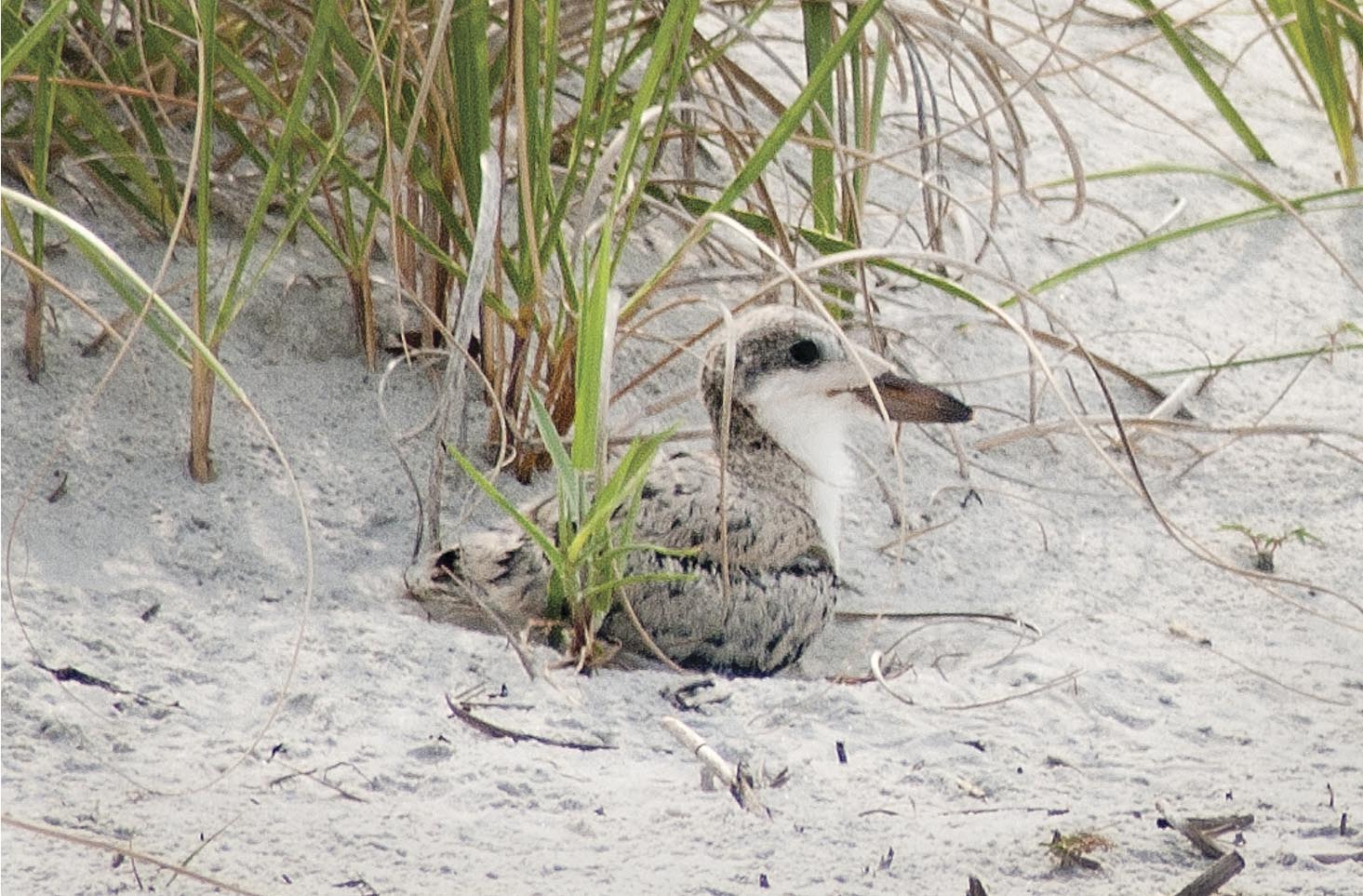The circle of life continues for local shorebirds. As nesting season wraps up at the south end of Wrightsville Beach, Audubon North Carolina is beginning to shift focus to the inlets, where the birds prepare for the long journey to winter grounds.
Lindsay Addison, coastal biologist with Audubon North Carolina, said the south end colony had a successful nesting season overall, with:
- Black skimmers producing approximately 0.7 fledglings per pair, with a high count of 69 fledglings for 101 pairs of nesting birds.
- A dozen pairs of common terns yielding a high count of 12 fledglings.
- Two of four pairs of American oystercatchers on the south end fledging one chick per pair.
Audubon counts the chicks after they fledge, or begin to fly.
A handful of least tern pairs attempted to nest at the south end but the open, sandy habitat they prefer was dredged away during the beach renourishment project earlier in 2014 and no pairs were successful. In 2013,more than 250 pairs of nesting least terns settled on the south end of Wrightsville Beach.
The black skimmers did not fare as well as they did in 2013, when 137 pairs fledged on average one chick per pair. Black skimmers will nest on sparsely vegetated stretches of sand, unlike least terns.
Both oystercatcher chicks were banded and the Audubon team hopes to see them return in coming years.
Addison said some of the chicks and adults continue to use the posting and the area around it. One oystercatcher chick still roosts inside the posting, while crowds of black skimmer adults and chicks roost on the beach outside the posting around high tide. Audubon will remove the postings around the end of August, allowing time for the chicks to use the area to hone flying skills before moving to inlets to fatten up and rest before fall migrations.
“They’re getting the hang of it. They’re like awkward teenagers learning how to do things for the first time. This is a difficult time for the chicks,” Addison said during an Aug. 8 phone interview. “It’s good for the chicks to have a place to rest and be undisturbed.”
Addison said some shorebirds, sand pipers and plovers as well as terns and skimmers, have already started to arrive at Mason, Rich and Topsail Inlet to feed and rest. She said the first piping plovers arrived from summer nesting grounds in the Arctic in July.
Addison said female birds are generally the first to arrive.
“The males will sort of be stuck with the teenager chicks and the female… spent a lot of energy early on, producing the eggs, so she tends to migrate first,” Addison said.
Although some birds are already checking in, the birds will begin to arrive en masse in September, with peak numbers in late October or early November before they all leave for southern winter grounds by Thanksgiving.
Addison said Mason Inlet hosted more than 2,000 black skimmers in 2013. The Audubon team will monitor the inlets weekly to count the birds.
The birds are fun to watch but Addison warned against disturbing them, even with actions as simple as making them scatter while walking down the beach or disturbing feeding.
“It doesn’t look like much is happening but you’re taking up a little of that energy that they need, and if everybody takes a little bit, then they might not have any left over for themselves,” she said.
email [email protected]




